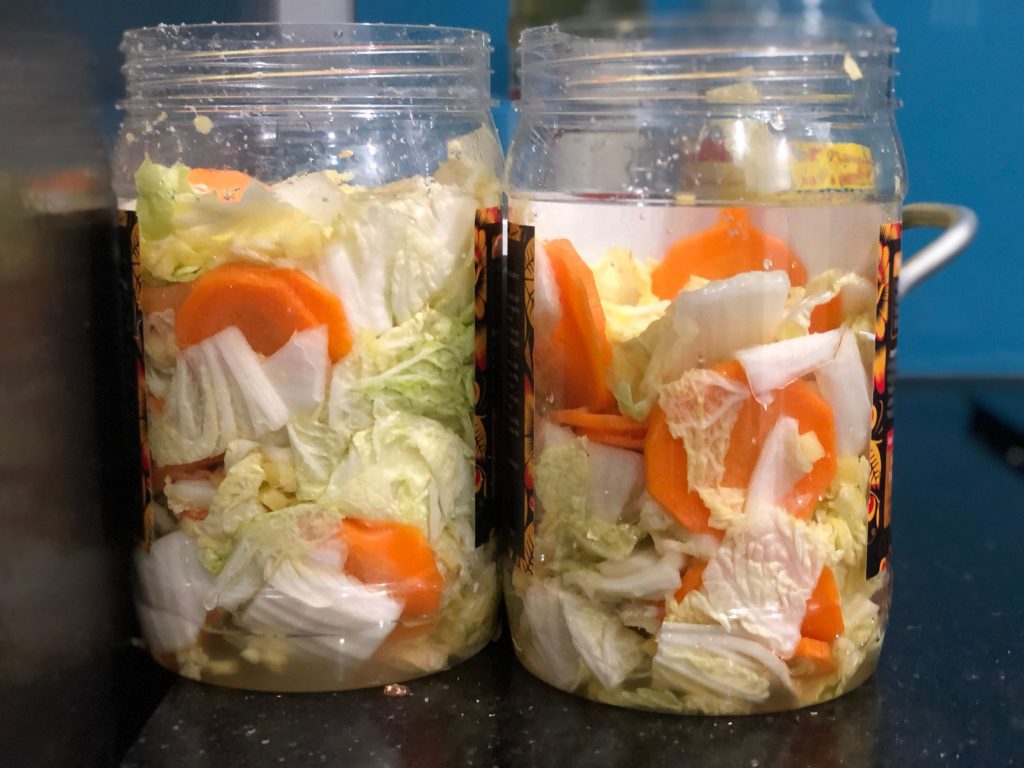Vietnamese kimchi, known as "củ cải bắp" or "củ kiệu," is a type of fermented vegetable dish in Vietnamese cuisine. It's typically made with pickled mustard greens or cabbage, and it often includes ingredients like garlic, ginger, chili, and sometimes daikon radish.
The main difference between Vietnamese kimchi and Korean kimchi lies in the ingredients and flavor profiles. While both are fermented vegetable dishes, they use different vegetables and seasonings.
Korean kimchi, the more widely known variety, is often made with napa cabbage and Korean radishes. The seasoning includes garlic, ginger, Korean red pepper flakes (gochugaru), fish sauce, and sometimes other ingredients. The result is a tangy, spicy, and flavorful dish that is a staple in Korean cuisine.
The vegetables are typically salted and left to ferment. The fermentation process develops the unique flavors of the dish while preserving the vegetables. The time required for fermentation can vary, affecting the taste and texture of the final product.
Vietnamese kimchi is often served as a side dish, adding a flavorful and fermented element to a meal. It can also be used as an ingredient in various Vietnamese dishes, providing a tangy and spicy kick. While not as globally renowned as Korean kimchi, Vietnamese kimchi holds cultural significance in Vietnamese cuisine. It reflects the use of fermentation and pickling techniques in Vietnamese culinary traditions.
It's important to note that variations may exist in the preparation of Vietnamese kimchi, as recipes can vary across regions and individual preferences.

